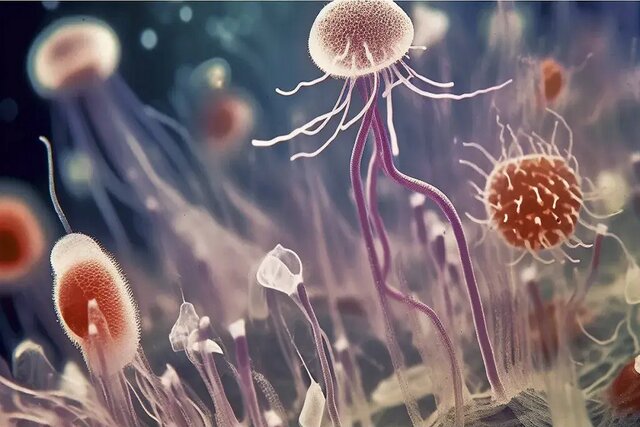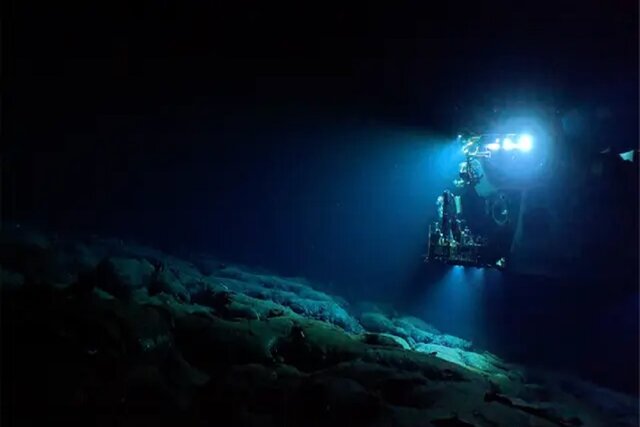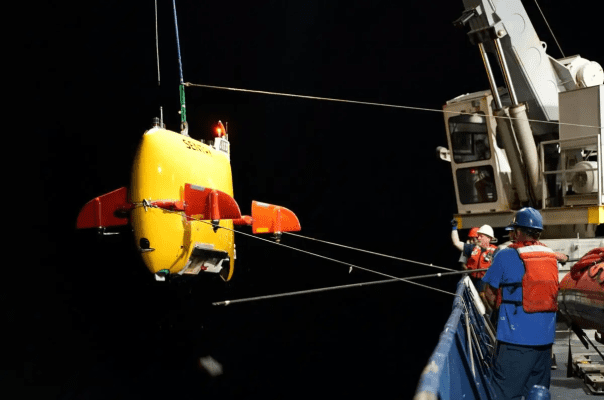A new fuel cell harnesses energy from soil-dwelling microbes to power sensors, harvesting nearly unlimited energy from the soil. In this article we will talk about a device that produces endless energy from soil.
A device that produces endless energy from soil
A team from Northwestern University has demonstrated a new way to generate electricity. They introduced a device the size of a book that sits on top of the soil and collects the force generated by microbes breaking down the soil (as long as there is carbon in the soil).
According to New Atlas, microbial fuel cells, as their name suggests, have been around for over 100 years. They work a bit like a battery, with an anode, cathode, and electrolyte, but instead of taking electricity from a chemical source, they work with bacteria that naturally donate electrons to nearby conductors.
This newly invented fuel cell relies on the ubiquitous natural microbes in the soil to generate energy.
Powered by soil, this device is a viable alternative to batteries in underground sensors used for precision agriculture.
A microbial fuel cell (MFC) or biological fuel cell is a biochemical system that produces electric current by mimicking the activity of bacteria that occurs in nature. A microbial fuel cell is a type of biochemical fuel cell system that generates electric current by diverting electrons produced from the microbial oxidation of reduced compounds (also known as fuel or electron donors) on the anode to oxidizing compounds (known as oxidizing agents or also known as electron acceptor) on the cathode through an external electrical circuit.
Fuel cells can be divided into two general categories “mediated and non-mediated”. The first fuel cells, introduced in the early 20th century, used a mediator, a chemical substance that transfers electrons from the bacteria in the cell to the anode. Non-intermediate fuel cells emerged in the 1970s. In this type of fuel cell, bacteria usually have electrochemically active proteins such as cytochromes on their outer membrane that can transfer electrons directly to the anode.
Read More: What if all the fish in the ocean disappeared?
Northwestern University researchers note the durability of their powerful fuel cell and have shown its ability to withstand various environmental conditions, including dry soil and flood-prone areas.
The issue so far has been to supply them with water and oxygen while they are buried in the soil. Although these devices have existed as a concept for more than a century, their uncertain performance and low power output have hampered efforts to put them into practice, especially in low-power conditions, says Northwestern University graduate student Bill Yen, who led the project. The humidity had stopped.
So the team set out to create several new designs aimed at providing cells with continuous access to oxygen and water and succeeded with a cartridge-shaped design that sits vertically on a horizontal disk.
A disk-shaped carbon-felt anode sits horizontally at the bottom of the device and goes deep into the soil, where it can capture electrons as microbes break down the soil.
Meanwhile, the conductive metal cathode is placed vertically above the anode. So the lower part goes deep enough to access the deep soil moisture, while the upper part is flush with the ground and a fresh air gap runs the entire length of the electrode, and a protective cap on top prevents soil from falling and It becomes waste and cuts off the cathode’s access to oxygen. Part of the cathode is also covered with a water-insulating material so that when water is present, a hydrophobic part of the cathode is still in contact with oxygen for the fuel cell to work.
The researchers used a waterproof material on the surface of the cathode, which allows it to work even during flooding and ensures gradual drying after immersion in water.
“These microbes are everywhere,” says George Wells, lead author of the study. They live in the soil everywhere now and we can use very simple engineered systems to get electricity from them. We’re not going to power entire cities with this energy, but we can capture very small amounts of energy to fuel essential, low-consumption applications.
Also, chemicals left over from batteries can potentially seep into the soil. This new technology is an environmentally friendly alternative that reduces environmental concerns associated with hazardous battery components and is also non-combustible.
The design performed consistently well in tests at varying levels of soil moisture, from completely waterlogged to relatively dry, and produced, on average, about 68 times more energy than its sensors needed to operate. It was also strong enough to survive extreme changes in soil moisture.
As with other sources of long-term electricity generation, such as diamond beta-voltaic batteries made from nuclear waste, the amount of electricity produced here is not enough to start a car or power a smartphone, but rather to power small sensors that can be used for long periods. work for a long time without needing to replace the battery regularly.
In addition, the researchers attached the soil sensor to a small antenna to enable wireless communication. This allowed the fuel cell to transmit data to a nearby station by reflecting existing radio frequency signals.
It is noteworthy that this soil fuel cell has a 120% better performance than similar technology.
Bill Yen says: “If we imagine a future with trillions of devices, we can’t make them all out of lithium, heavy metals, and toxins that are dangerous to the environment.” We need to find alternatives that can provide small amounts of energy to power a decentralized network of devices. In our search for a solution, we turned to soil microbial fuel cells, which use special microbes to break down soil and use that small amount of energy. As long as there is organic carbon in the soil for microbes to break down, our fuel cells can potentially survive.
Therefore, sensors like these can be very useful for farmers looking to monitor various soil elements including moisture, nutrients, pollutants, etc., and to use a technology-based precision agriculture approach. So if you put several of these devices around your farm, they can generate data for you for years, maybe even decades.
It should be mentioned that according to the research team, all the components of this device can be purchased from hardware stores. Therefore, there is no problem in the supply chain or materials for the widespread commercialization of this product.
This research was published in the ACM Journal on Interactive, Mobile, Wearable, and Ubiquitous Technologies.





 Technology10 months ago
Technology10 months ago


 Technology11 months ago
Technology11 months ago


 Technology10 months ago
Technology10 months ago


 Technology11 months ago
Technology11 months ago


 AI1 year ago
AI1 year ago


 Humans1 year ago
Humans1 year ago


 Technology11 months ago
Technology11 months ago


 Technology11 months ago
Technology11 months ago




























